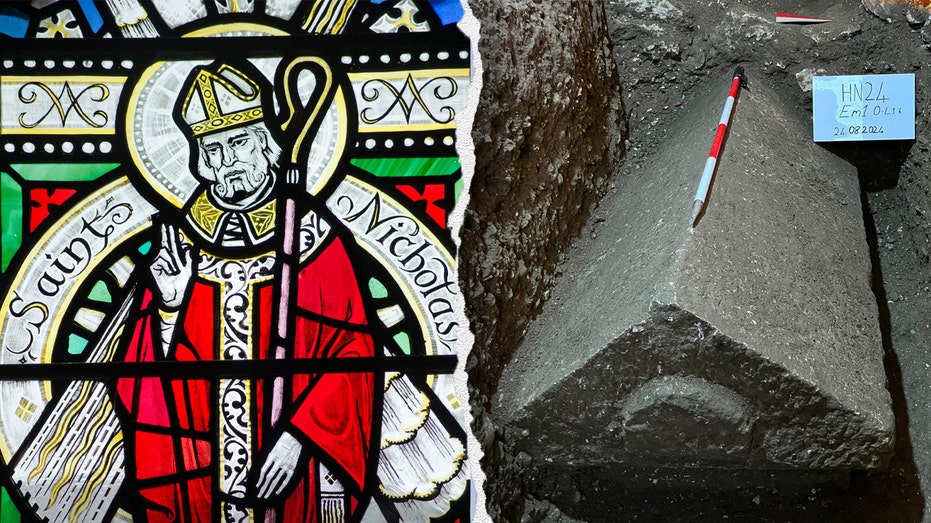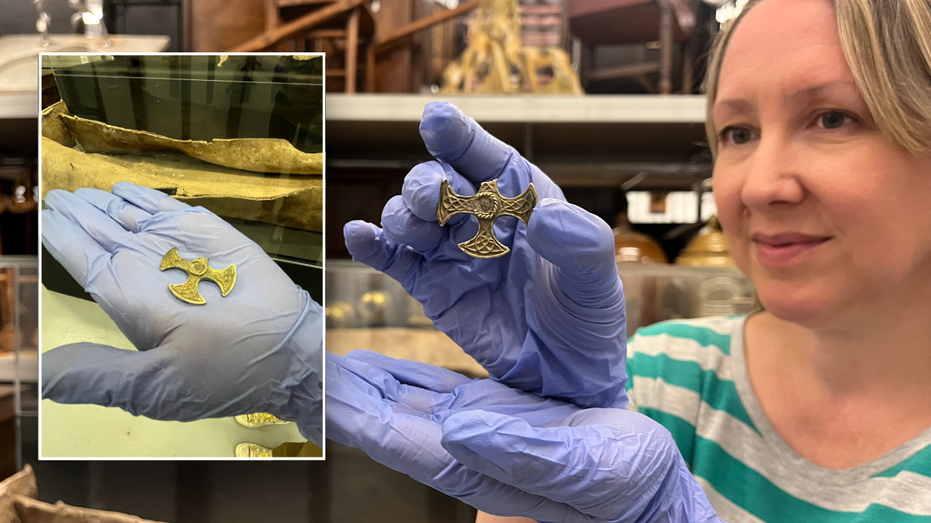- by foxnews
- 25 May 2025
'Santa Claus' sarcophagus and more ancient religious relics among big discoveries in 2024
A number of rare religious relics were uncovered in 2024, with some on display to the public, giving people a better understanding about the time they first appeared in history.

Many rare discoveries have been made across the globe over the course of the year 2024.
See some of the significant pieces below.
A team of archaeologists may have unearthed a sarcophagus containing the remains of Saint Nicholas, whose spirit of generosity is still celebrated in the modern world more than 1,600 years later.
"We believe that we have encountered a sarcophagus to be in situ (original position) for the first time," said associate professor Ebru Fatma Findik, who is heading the excavation team through Hatay Mustafa Kemal University's Department of Art History.
The Museum of the Bible in the nation's capital opened an exhibit in partnership with the Israel Antiquities Authority (IAA), giving visitors a view of early Christianity in the Holy Land.
Titled "The Megiddo Mosaic: Foundations of Faith," the exhibit showcases IAA's archaeological find, dating back to the third century, on display for the first time since it was found.
The mosaic formed part of the floor of the oldest site of Christian worship ever to be discovered from the third century, according to officials with the Museum of the Bible (MOTB).
The exhibit opened to the public in September and is on display until July.
The artifact, publicized by the Frankfurt Archaeological Museum, is called the Frankfurt silver inscription.
The Frankfurt silver inscription is an engraving on silver foil that consists of 18 lines written in Latin. It dates to between 230 and 260 A.D. and was discovered wrapped in a small silver amulet.
The inscription begins, "In the name of Saint Titus, Holy, holy, holy! In the name of Jesus Christ, God's Son!"
"The heavenly, the earthly and the underground, and every tongue confess (to Jesus Christ)," the text concludes.
Written in Latin, the inscription took several weeks to decipher due to its deteriorated condition. Archaeologists needed to "digitally unroll" the silver foil, which had been crumpled for around 1,800 years.
Museum officials told Fox News Digital, "The silver inscription is from now on part of the museum's permanent exhibition."
The University of Münster announced the discovery of the fourth-century church located in Germany.
The remains of the ancient Christian building were found at the Artaxata site in the Ararat Plain.
The octagonal church at Artaxata had a floor made of mortar and terracotta tiles, and measured around 100 feet in diameter.
"The 4th century building is the oldest archaeologically documented church in the country - sensational evidence for early Christianity in Armenia," University of Münster Professor Achim Lichtenberger said in a statement.
"The city developed into an important metropolis in the Hellenistic period and was the capital of the Kingdom of Armenia for almost six centuries," a press release from the school explained.
Gretchen Eichenberg and Fox News Digital's Andrea Margolis contributed to this report.
- by foxnews
- descember 09, 2016
Rare 1,200-year-old Christian cross found in field by metal detectorist
The City of Leeds in the U.K. recently revealed a Saxon treasure: a gilded pendant from Northumbria's Christian past, offering a glimpse into early medieval life.
read more




